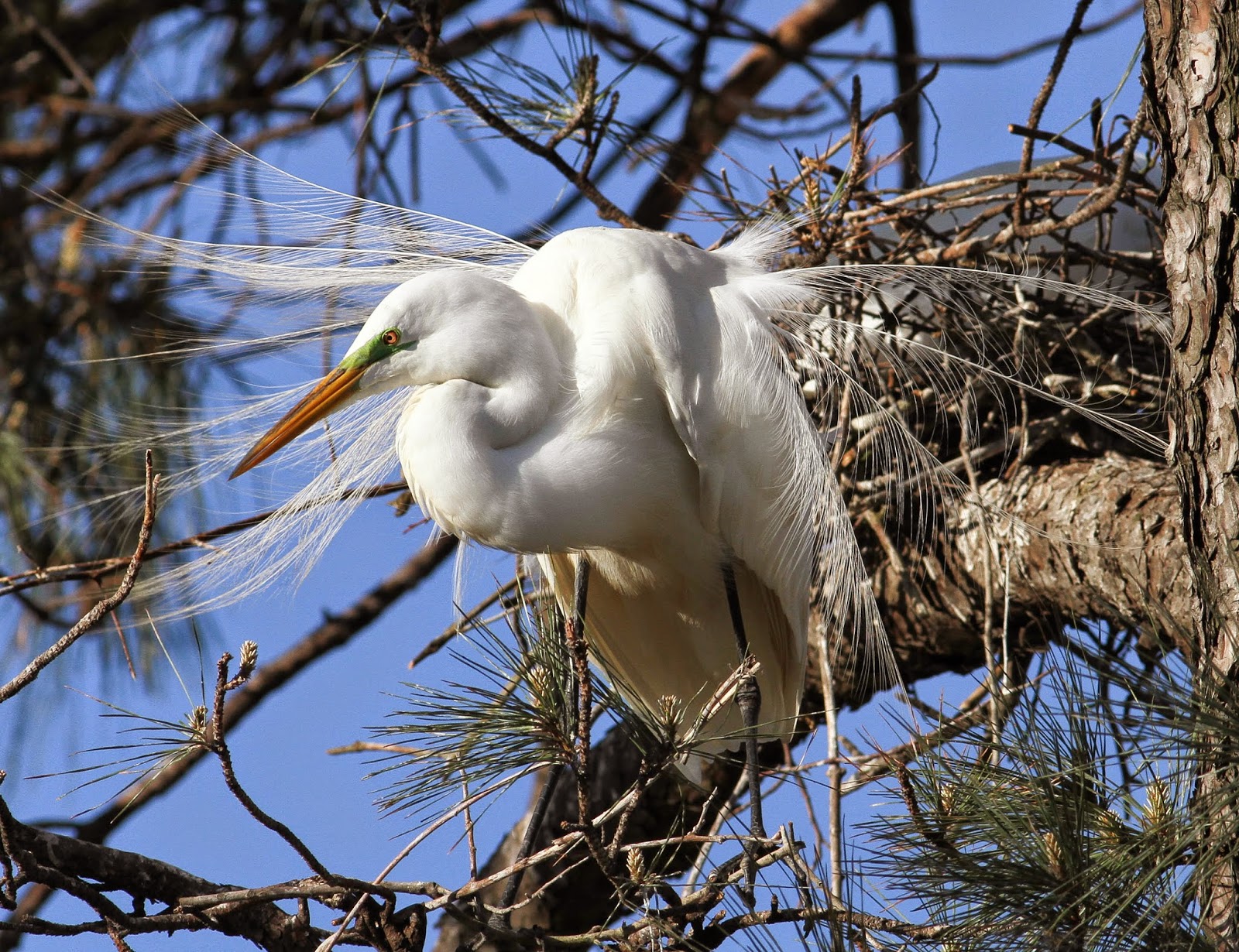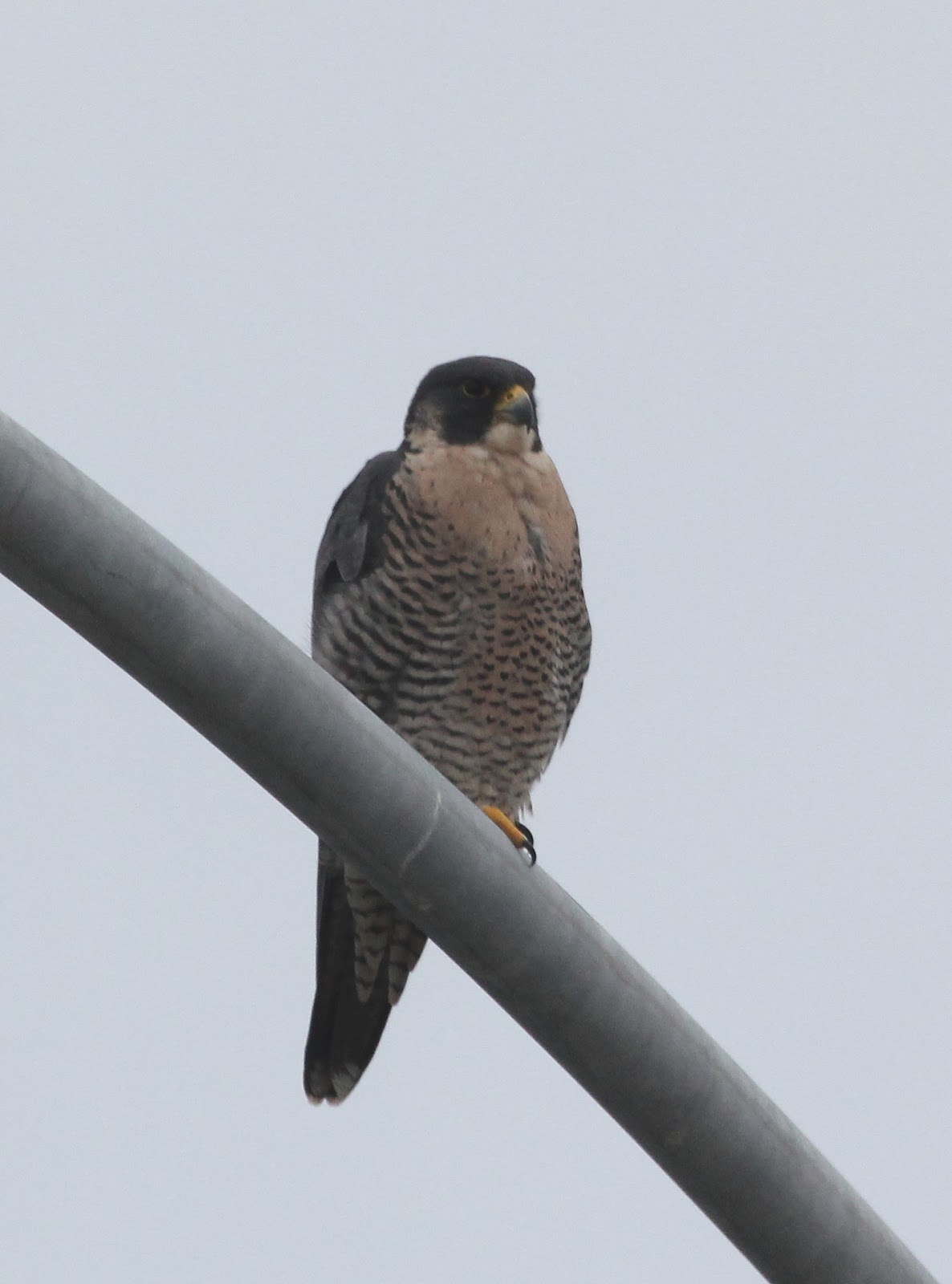Spring bird migration in Virginia is now over, so it’s
likely that any birds you see for the next couple of months are breeding birds that
will be here all summer. Right now is the best time to go out and look for
these birds; the weather is still cooler on most days, insects are not as
numerous or voracious as they will be soon, and many birds are still singing to
attract mates or claim breeding territories, making them easier to find. Additionally, most birds are still in fresh
breeding plumage and are at their most stunning; as the summer wears on their
feathers will wear down and their colors become duller.
I went on two particularly productive birding field trips in
the latter half of May, to Mackay Island N.W.R. near Knott’s Island, N.C., and
to Paradise Creek Nature Park in Portsmouth. The photo at the top of this
posting is of an adult male Common Yellowthroat I saw at Mackay Island.
Yellowthroats are a type of warbler that is common in Virginia, and you will
hear them at almost any wet or marshy area. They are usually hidden away in the
reeds or grasses, but if you’re lucky one might pop out into the open to check
you out.
Most of the habitat at Mackay Island is wetlands and freshwater
marshes, which are actively managed for waterfowl, shorebirds, rails, and
wading birds like herons, egrets, ibis and the like. Below are photos of some
of these birds that I took when I went to Mackay on May 15:
This Glossy Ibis is coming in for a landing at the wetlands near the Visitors Center.
The photo below is of the same bird, feeding.
Greater Yellowlegs
Little Blue Heron
Mackay also has fields and eastern pine hardwoods forests,
which attract songbirds like Orchard Orioles, Great-crested Flycatchers, Indigo
Buntings, Blue Grosbeaks, Summer Tanagers and many other species. Below is my
photo of one of the common summer residents, the magnificent Eastern Kingbird:
The visitor center at Mackay has wetlands and ponds that
attract several species of swallows including Purple Martins and Tree Swallows (below).
It’s hard to tell whether these swallows are fighting or flirting:
Paradise Creek Nature Park in Portsmouth is a very new park
that provides a sliver of good bird habitat in the middle of an older suburban neighborhood
and an industrial area near the Jordan Bridge. A sliver is enough, though, to
attract some beautiful birds. Here are some that I saw there last Saturday:
The Blue Grosbeak is a common summer resident in Virginia. It likes open, weedy fields.
This is the same species as the bird pictured at the top of this posting, a Common Yellowthroat. This first-spring male is not yet in its full adult plumage.
One of everyone's favorite birds is the stunning Indigo Bunting
As bird activity starts to wane after spring migration,
insect activity increases. I realize that more people are interested in birds
and bird photos than they are in dragonflies, damselflies and butterflies, but
I get very excited about finding and photographing them. Many of my
field trips for the next few months will be centered on finding dragonflies and
damselflies in particular. My next blog post will go into some detail about some
of our local species, but in the meantime, let me give you a taste of the diversity in the patterns and colors of some of our damselflies; they are truly one of
the jewels of the insect world!
Immature female Citrine Forktail
Southern Spreadwing
Male Blue-tipped Dancer. The female, below, looks nothing like the male.
Two pair of Orange Bluets in tandem. The male clasps onto the back of the female's head prior to mating.



















































